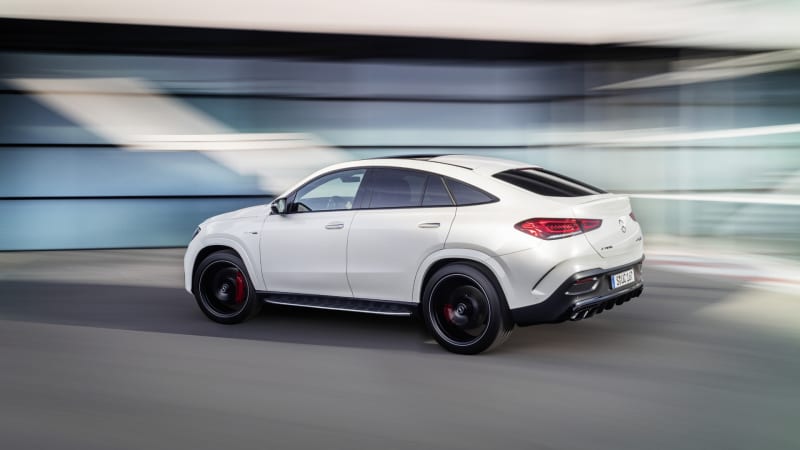Why do people buy SUCs? (you know, Sport Utility Coupes)
https://ift.tt/2xKogkO

Sport Utility Coupes (SUCs – sure, let’s go with that acronym) are proliferating in the automotive marketplace, applying four-door-coupe design templates – chopped roofline, smaller windows, faster back rear – to the sport utility category, and nowhere is this truer than in the Mercedes-Benz lineup, which has just introduced the new GLE 53 and GLE 63S AMG. And while, at first, it may seem counterintuitive for a rational, Teutonic manufacturer like Mercedes to offer a vehicle with diminished cargo and back seat space within a competitive set that privileges go-anywhere utility, there are actually several good reasons why the number of SUC offerings keep expanding.
First, according to automotive research and consulting firm Strategic Vision – which collects hundreds of thousands of in-depth surveys from buyers of new vehicles every year – there are compelling demographic and psychographic considerations. Buyers of Mercedes-Benz SUCs are four-to-five years younger than buyers of similar SUVs, which can help bring down a marque’s average age, a key factor in measuring overall brand desirability. They’re highly image conscious and seek novel shapes that may not be available elsewhere, and creating unique brand opportunities. And, perhaps most importantly, they’re significantly less price sensitive than typical SUV buyers, meaning that car companies can charge a premium for these vehicles in comparison to their more traditional counterparts.
“More than anything, buyers of these Mercedes SUCs want to look good while in their vehicle, and have it stand out from others,” says Alexander Edwards, the president of Strategic Vision. “They even see the vehicle as an extension of themselves, sort of like a gamer who sees their online avatar as an extension of who they are. So, in addition to representing themselves, they want the vehicle to represent their success.”
Other German luxury brands have certainly noticed and capitalized on these consumer trends. BMW created the segment in the first place with its X6, following it with the X2 and X4, while the Audi Q8 and Porsche Cayenne Coupe are other recent additions to the SUC fleet. The trend has even made its way down to a mainstream brand with the Volkswagen Atlas Cross Sport. Though the design trend has at least influenced the more traditional offerings of Japanese, American, Korean and British marques, none have fully embraced the segment as the Germans have (OK, so there was the Acura ZDX that lasted four model years without anyone noticing).
This emergent category is, intriguingly, a source of joy for Gorden Wagner, who runs global vehicle design for Mercedes-Benz.
“A coupe is always great, always a fun work, because you can do the stuff that makes a car better – great wheel-to-body relation, small greenhouse, wheels pushed into the body and so on,” he says. “As designers, we love to do coupes.”
All of this makes sense. And automakers have certainly been taking the superior functionality of four-door sedans and sacrificing them for the superior sportiness and handsomeness of two-door coupes nearly since the dawn of automotive doors. But I wonder if there is a risk – with this jacked-up, rotund-roofed, big-footed sub-species – of their design coming to resemble, as I believe the new GLE 53 and GLE 63 do, an angry turtle.
“How does an angry turtle look? I’ve never seen one,” Wagener laughs. “But when you say turtle, I mean, I love these round greenhouses, almost airplane-like greenhouses, thick radiuses all over, I think that’s pretty cool. It visually makes the vehicle even smaller looking.”
“Especially with coupes,” he continues. “I think it’s important to go into that free form sculpture, giving the car a lot of sex appeal – big shoulders, strong hips, good stance. Definitely better than a turtle. Though, the turtle has good stance too, with the feet on each corner.”
Wagener believes that we will continue to see a proliferation of new form factors around the crossover in the luxury market, typified by further blends of sedan and SUV.
“A few years ago we showed that Maybach Ultimate Luxury Concept, which already was a (range-topping) crossover between the SUV and the three-box limousine,” he says. “I think we had been very early with this concept, and the public was not quite ready for it. But I truly believe we will see that more in the future. So we will (have) even more diversity in the SUV line up.”
He even believes that, with the mainstreaming of electrification, it is possible that the sport sedan will merge with the crossover cohort, to form a new category of performance vehicle, a kind of EV/SUV/AMG mash-up. He believes this mainly for design purposes.
“We have 6 inches of battery to store underneath, and we can simply digest that better with larger wheels and this kind of SUV-ish height,” he says, describing something awfully similar to what Jaguar has already achieved with its electric I-Pace. “Automatically, the car becomes a bit off the ground and a bit higher. So yeah, we will see definitely more of this because of the technical layout underneath.”
However, Wagener firmly does not believe that beloved Mercedes convertibles, like the SL, are at risk of becoming crossover-ized.
“I personally don’t like that idea of convertible crossovers. I don’t think that it makes an appealing car,” he says. “I think it’s cool that somebody came up with that, just for the sake of diversity. But it’s nothing I would like.”
Related Video:
Auto Blog
via Autoblog https://ift.tt/1afPJWx
April 23, 2020 at 09:32AM